Top UNESCO World Heritage Sites in Europe
I loved the concept of UNESCO World Heritage Sites from the moment I heard about it. The first thing I did was, obviously, to see which UNESCO-listed sites are in my country, Romania. And I discovered quite a few! And then I saw how many amazing places from across the globe are included. Starting with this article I am presenting you the best UNESCO World Heritage Sites in Europe.
So, if you are wondering:
What UNESCO World Heritage Sites in Europe are worthy of a visit?
Here are the best recommendations from travel bloggers, all great European heritage sites. Some are UNESCO natural heritage sites, while others are UNESCO monuments.
In the list below you’ll find 15 of the best UNESCO World Heritage Sites in Europe. More in the articles listed below:
- UNESCO World Heritage Sites in Europe – part 2 (15 sites)
- Must-See UNESCO World Heritage Sites in Europe – part 3 (20 sites)
- The best UNESCO World Heritage Sites in Europe to add to your bucket list (part 4) (20 sites)
- The Best UNESCO World Heritage Sites in Europe – part 5 (24 sites)
Coimbra University, Portugal
Julie Fox from Julie Dawn Fox in Portugal – Pinterest
The small, attractive city of Coimbra is home to Portugal’s first university, founded in 1290 by King Dinis. After transferring its base between Lisbon and Coimbra a couple of times, the university finally settled into the former royal palace on the top of Coimbra’s highest hill in 1537. As you might imagine, the views from here are enviable.
The oldest buildings on campus feature the ornately carved stonework of 16th century Manueline doorways and include one of the world’s most beautiful libraries. A resident colony of bats protects more than 200,000 volumes in the 18th century Baroque library from insects. There’s also a prison for unruly students, a delightful chapel with painted ceiling and the blue and white painted tiles that Portugal is famous for plus a fittingly ornate ceremonial room.
As the university expanded, it quickly outgrew the palace buildings and, following the dissolution of monasteries in Portugal in 1834, took over the convents in the lower part of the city. Most of these are along Rua da Sofia and are encompassed by the UNESCO listing, giving you an excuse to visit both Upper Coimbra and the downtown Baixa area.
Tips for visiting Coimbra University
It’s not necessary to buy a ticket to go through Porta da Férrea, the elaborate and ancient entrance to the oldest buildings and courtyard of Paço das Escolas. You can enjoy the views of the Mondego River from here as well as the impressive exterior architecture. For the best views of Coimbra, buy a €2 ticket to go up the clock tower.
If you want to visit the library and the other more impressive spaces in the university, you need to buy tickets from the modern Biblioteca (Library) building to the left of Porta da Férrea. At peak times, there can be quite a long queue so it’s better to go earlier in the day if possible.
Plitvice Lakes National Park, Croatia
By Sam and Natalia from Something of Freedom; instagram
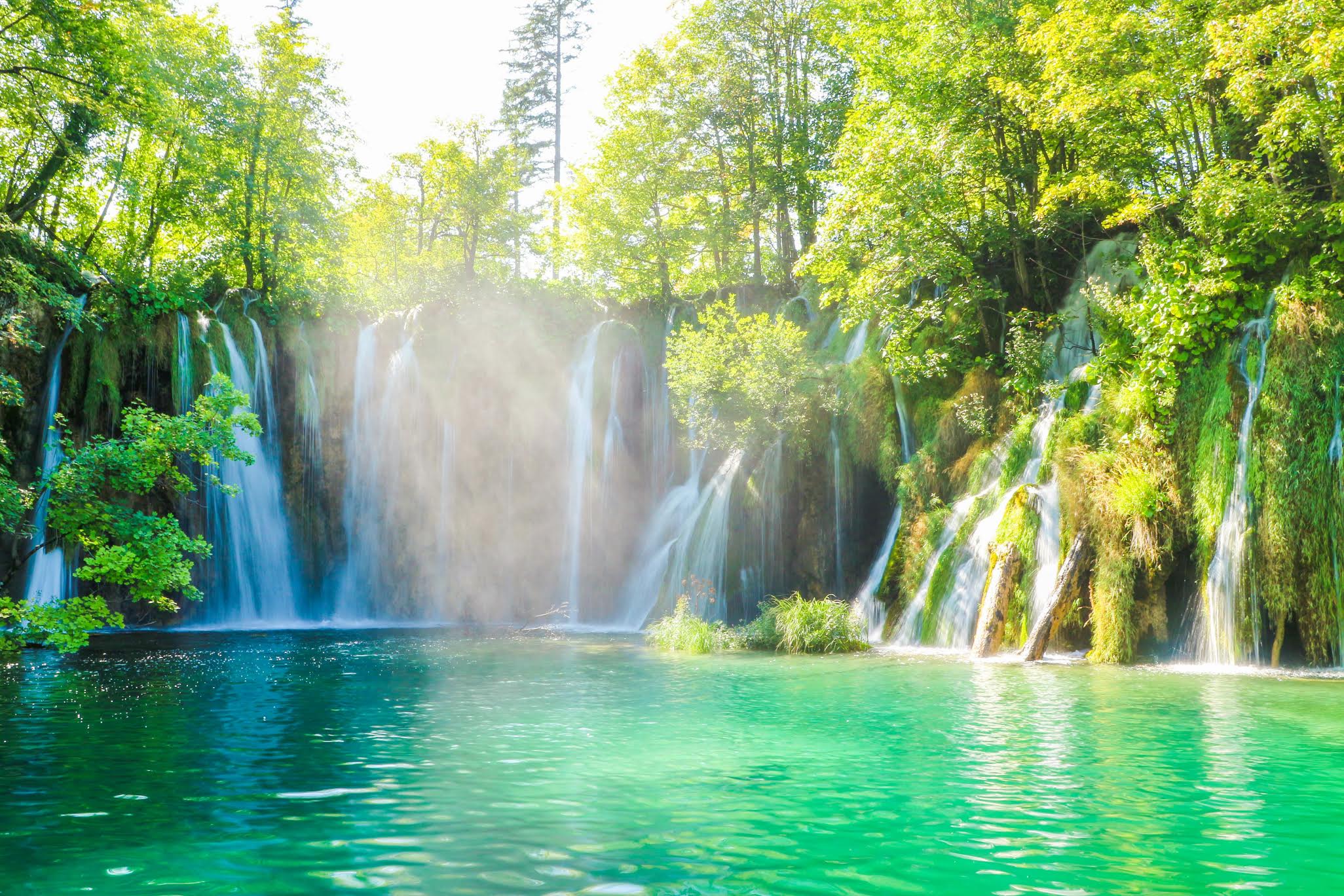
In 1979, the Plitvice Lakes National Park became one of the first UNESCO World Heritage sites in Croatia. With wild waterfalls and almost impossibly clear turquoise lakes, the park is arguably one of the most naturally beautiful places in all of Europe. It is this captivating natural beauty that makes Plitvice one of the top UNESCO sites to visit in Europe.
The lakes of Plitvice are split into 2 sections – the upper lakes and the lower lakes. Both areas of the park are mesmerising and have an abundance of waterfalls and stunning lakes to take your breath away. There are 12 upper lakes, connected by waterfalls and surrounded by wild forest. The 4 lower lakes have a different feel but are by no means less impressive. In fact, the lower lakes section of the park is home to the tallest waterfall in Croatia – Veliki Slap.
While the remarkably clear waters of the Plitvice Lakes look incredibly inviting, swimming is forbidden in order to preserve the wonderful nature of the park. Irrespective of this, Plitvice’s astonishing scenery is more than enough to justify itself as one of the best UNESCO World Heritage sites in Europe.
As the Plitvice Lakes National Park can be extremely busy during July and August, the best time to visit is either May/June or September/October. If you visit during October you may also get a chance to see how beautiful Plitvice can during the fall foliage. Visiting at this time of year is cheaper too – costing 150 kuna instead of 250 kuna in July and August.
If you don’t mind braving the cold, it can be incredibly rewarding to visit during winter. With the right timing you’ll find the park covered in snow, with some of the lakes and waterfalls frozen – which is a truly spectacular sight! The entrance fee is even lower at this time of year too at just 55 kuna, although it’s common for the upper lakes to be closed off due to the weather.
Wooden Churches of Maramures, Romania
By Alina from The Happy Kid; Facebook
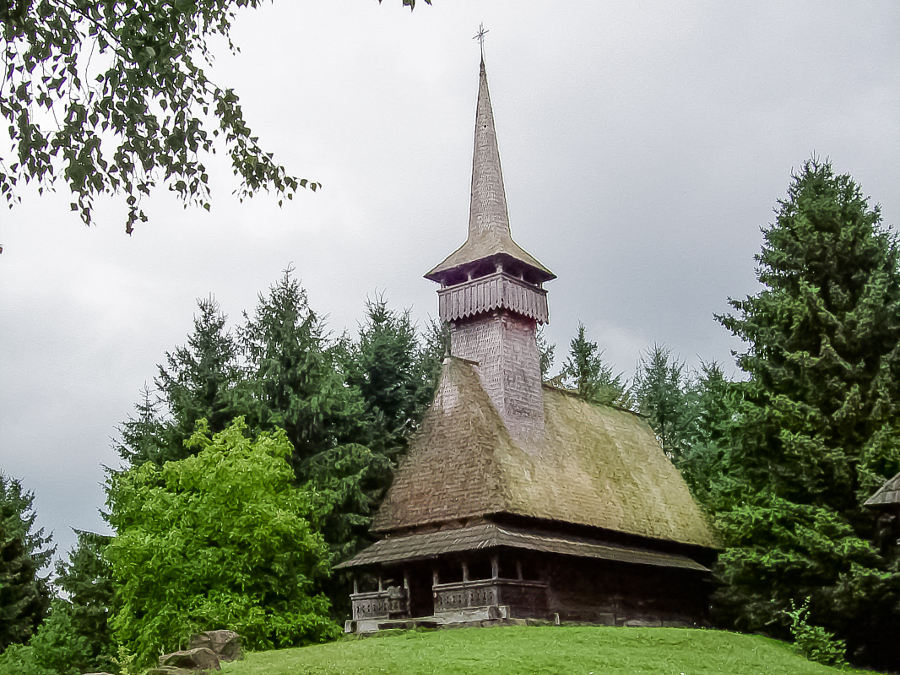
Faith and religion is the central point in the life of Maramures, one of the Romanian regions that best preserved its traditions. All around the county you can find tiny churches, modest, quiet, in the middle of the nature. Built between 17-19 century, or even older, they are rather simple, done by local carpenters, which is actually their charm. They all feature tall, slim towers, shingles roofs and a similar floor plan, but have particular items from the period they were built or the local artists involved. In these churches you can find the true spirit of Christianity, far from what it became in large metropolitan areas.
Eight of these wooden churches are listed as UNESCO World Heritage Sites for almost 20 years now:
- Barsana Church, initially a monastery, but then translated on a hill, where plague victims were buried
- Ieud Church, where one of the oldest documents in Romanian was discovered
- Budesti Church, with its four small towers and holding a large collection of wooden and glass icons
- Poienile Izei Church, the best preserved and featuring moralising paintings focused on Hell and punishment
- Surdesti Church, 72 m tall, one of the highest wooden buildings in the world and the second highest wooden church in Europe
- Desesti Church, showing the various cultural influences in the region, with Celtic crosses and paintings of various nations in traditional costumes
- Plopis Church, still the only church of the village, regularly used for religious activities
- Rogoz, with a wide, asymmetrical roof which shelters the Elder’s Table
The best way to visit the Wooden Churches of Maramures is by taking a 2-3 days road trip. Book a room into a local guesthouse and make sure you have enough time, as you will find lots of other interesting sights to visit. Driving through the area, you will be able to enjoy the picturesque countryside landscape that will transpose you in a different era. Beware that some of the churches might be closed in certain days/time frames. But do not worry about that, just ask around in the village or at your accommodation.
People here are extremely welcoming and kind and will do their best for you to have a great experience in Maramures.
The Ancient Oracle at Delphi in Greece
by Dave Briggs from Dave’s Travel Pages; Facebook
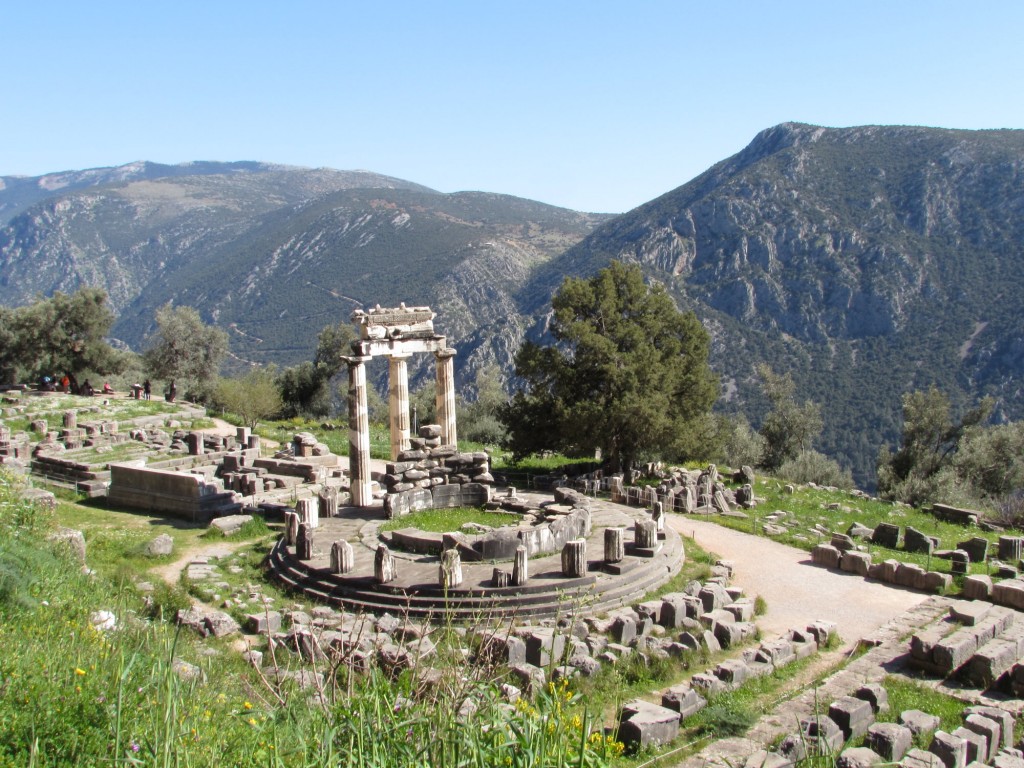
The ancient Greeks used to refer to Delphi as the Navel of the Earth. As a temple complex and sanctuary, it was an important centre for both religious and cultural reasons. People would travel from hundreds of miles all around to consult the Oracle before major decisions were made such as declaring war, founding colonies, and forming alliances.
Located on the slopes of Mount Parnassus about 10 kilometres from Athens, Delphi was declared a UNESCO World Heritage Site in 1987 due to the uniqueness of its design and construction, and its impact on the ancient world. Today, visitors can see several important temples and areas within the complex, including the Temple of Apollo, stadium, Sibyl Rock, Tholos and theatre. The site also has one of the best museums in Greece, which helps to explain both the history and the function of the site.
Delphi is one of the most popular UNESCO attractions in Greece, and can be visited all the year through. For independent travellers, I would suggest visiting later in the day after the tour companies have departed. Low season is also quieter than high season. Travellers with their own vehicles might consider either staying the night in the nearby town, or continuing their journey on to Meteora to see the monasteries and mountains.
Interested in finding out more about visiting Delphi in Greece? Dave explains here how to visit Delphi as a day trip from Athens.
Villa Romana Del Casale, Agrigento, Italy
by Talek Nantes from Travels with Talek; Facebook
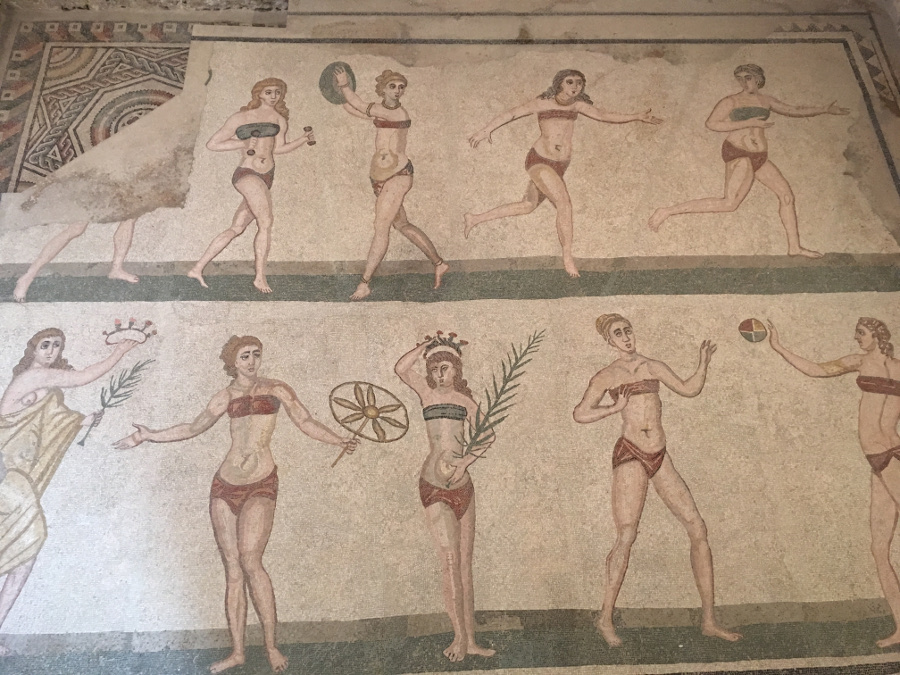
If you go wandering around southern Italy, you probably have Agrigento as a major destination. And with good reason, it is amazing. On your rush to get there, however, you can’t miss one of the most spectacular UNESCO World Heritage Sites in all of Europe and possibly the world; Villa Romana Del Casale. The villa is a large expanse of Roman architecture and graceful beauty, a remarkably preserved Roman villa. They may refer to it as a “villa” but in reality, it is closer to a palace. The main draw of the villa is the amazing, well excavated archaeological collection of Roman mosaics. The mosaics are said to be the most complete in existence.
The villa was built in the 4th century AD and was severely damaged many times. After it was buried under a landslide in the 12th Century, it was finally abandoned. Archaeologists excavated throughout the 20th Century and managed to rescue many of the mosaics in relatively intact condition. Witnessing these magnificent works of art is one of those travel moments where you feel humbled and somehow connected to the past. If you are one of those that are touched by beautiful art, seeing these mosaics can be an emotional experience.
The Škocjan Caves, Slovenia
by Leo from Safari Nomadt; Facebook
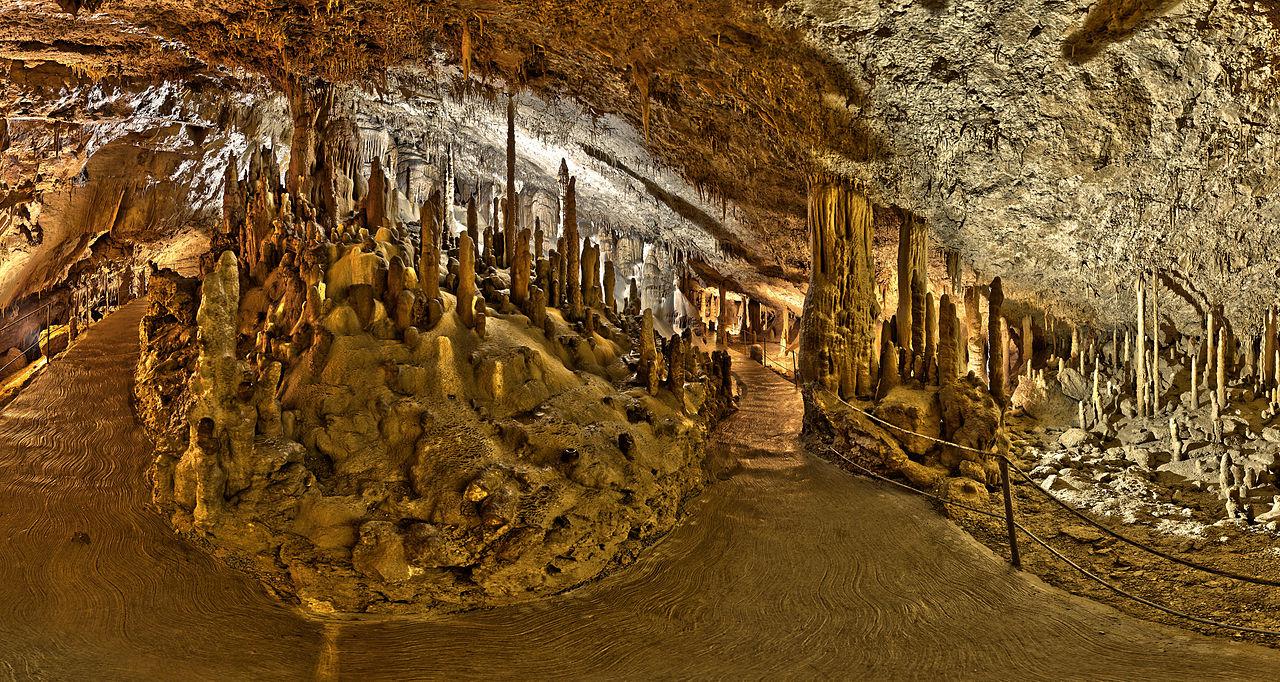
The Škocjan caves are one of the most exclusive limestone cave systems in the world. The area surrounding Škocjan Caves is a regional park, an area of protected heritage, included on the UNESCO world heritage list.
The park is an open-air museum and boasts aboveground and subterranean karst phenomena, of which the most unique is 6 km long Škocjan Caves.
The site is located in the Karst region of South West Slovenia and is one of the most famous in the world for the study of karstic phenomena. The caves have the largest subterranean river canyon in Europe and many kilometers of trails for visitors. Incredible bridges allow you to see underground waterfalls, lakes, grand halls, stalactites and stalagmites with 15 meters high. The area is also famous for having thermal spas with long tradition.
Your stay in the park can include three tours:
- Through the underground Canyon
- Following the Reka river underground
- Along the Škocjan Education trail (learn about karst phenomena, relief forms, flora and fauna, cultural heritage of the area and visit the museum exhibitions in the village of Škocjan)
This phenomenon area is home to several species of cave animals (living in land and water) and in the area of the regional park rich with flora (sub-Mediterranean species), some endangered species and cultural heritage.
Tips before you go:
- The best moment to visit the Škocjan caves is during winter when the water in the Reka river is higher.
- The temperature is constant, 12°C, so dress warmly.
- The paths are sometimes slippery, so wear good walking shoes.
- Rules when in caves: no photos, no pets allowed, no feeding animals.
The City of Bath, England
by Nat from natpacker: Twitter @natpackertravel

The City of Bath is located in Somerset, in the Avon River Valley. The city was founded by the Romans in the 1st century AD. It is most famous for its Roman Baths, using the natural hot springs as a thermal spa is what attracted the Romans to found the city. In 1987 the city became a UNESCO World Heritage site.
The city is beautiful, with Georgian architecture and historic buildings. There are the historic baths, the abbey and places like the Circus, all waiting to be discovered. Plus green spaces and the river running through the city. It also makes a great place from which to explore more of Somerset.
Bath is a World heritage site due to several cultural attributes. Firstly, there are the Roman remains, such as the bath complex. These baths are the most famous north of the Alps and are the heart of the city’s development. The Georgian aspect of the city make it arguably one of the most beautiful in Europe. Architecture and landscape are perfectly combined for the enjoyment of the people that lived there and visited the spa. There are also Neo-classical buildings that reflect the social ambitions of the city in the 18th century.
My tips, like most places in England, go in summer! You can’t guarantee the weather, but at least you have a chance of some sunshine and warmth in summer. Also, make sure you take the Abbey tour into the bell towers. It’s really interesting, full of history and tales! Plus you get some amazing views of the city from the top.
Bremen Rathaus (Town Hall), Germany
by Arzo from Arzo Travels; instagram
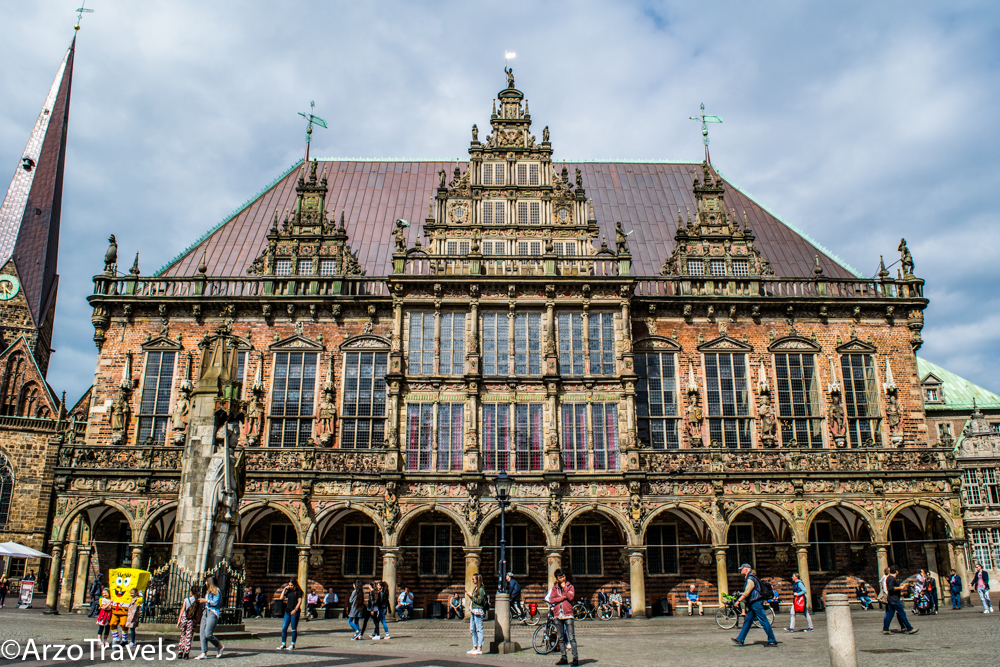
You might think, I am biased as a local but if you happen to visit the beautiful city of Bremen in Germany, you will find out that I am totally right in saying that the Bremen Rathaus (Town Hall) is one of the most beautiful UNESCO World Heritages Sites in Europe.
Located very centrally, on the historical market square, it is one of the most famous tourist attractions in Bremen and one of the most photographed sights.
The Town Hall is, amongst other, a popular place for celebrations or welcoming high-ranking guests from all over the world (including Michael Jackson).
Stunning from the outside and inside (you can book tickets for a guided tour) it is known for being one of the most beautiful town halls in Germany.
Built in the 15.th century it has been become a UNESCO World Heritage Site in 2004 (along with the Roland Statue which is just in front of the Town Hall).
You might see older pictures with a green roof and some newer ones with brownish roof – the roof was renewed in 2017 and the brownish color will change over the years and become greenish again (something we have to get used to as locals). But most of the town hall hasn’t been changed in years.
If you are short on time and can’t do a guided tour, you can still admire all the details from the outside.
You can visit at any time, for tours you need to book tickets in advance, but walking around is always possible – though it looks the prettiest when it is sunny.
In the summer, there are also several cafes that offer outdoor seating options at the market square, so you have a lovely view at the Rathaus.
Beneath the Rathaus you will find a very unique restaurants and wine cellar – as you can see, this UNESCO Site holds some surprises for you.
Pompeii, Italy
by Cris Puscas from LooknWalk; Facebook

Famous because it was destroyed by the Vesuvius in 79 AD, Pompeii is now one of the most visited sites in Italy, an ancient Roman city. It is a UNESCO World Heritage Site and it’s been a tourist destination for more than 250 years.
The first-time parts of Pompeii were unearthed was in 1599 but the first real excavations took place in 1764. Many of the (erotic) artifacts are housed at the Naples Archeological Museum.
It is very easy to get from Naples to Pompeii thanks to Circumvesuviana. The ticket types and prices do change so make sure to research before your trip. In 2017, a one-way ticket valid for 140 min was 3.50 euros. The same is valid for the entrance tickets to the site. You can buy a combined ticket to visit the rest of the site in the area (including Herculaneum) or stick to Pompeii only.
The site is huge – after all, it’s an entire city. It is a walking site only and you really want to wear really good walking shoes (leave the heels home!) and bring a water bottle – as there are fountains throughout the site. I visited the site in September and it was hot, but it also rained a bit. So make sure you have some waterproof jacket with you. I advise against visiting in July or August, but May and September are fair game.
You can easily spend a day checking out the site and may still not see all of it. And since I don’t like guided tours, I got myself a booklet (which includes a map) and proceeded to see the site. You don’t want to miss the following buildings: the Amphitheatre, the Great Palaestra (Gymnasium), the Forum, House of the Vettii, House of the Vettii, the Temple of Apollo, the Lupanar, the Basilica, and the baths.
Villa dei Misteri deserves special attention. It is extremely well preserved and located at the outskirts of Pompeii. It is famous for the frescos which are the best-known survivals of Ancient Roman painting.
Do remember that Mt. Vesuvius is an active volcano and may erupt at any time. There is a system to warn the population about impending eruptions, so it is safe to explore Pompeii. However, if you plan to hike Vesuvius, too, make sure to keep in many any advisories.
Laponian Area of Sweden
by Joel from World Heritage Journey www.worldheritagejourney.com; YouTube
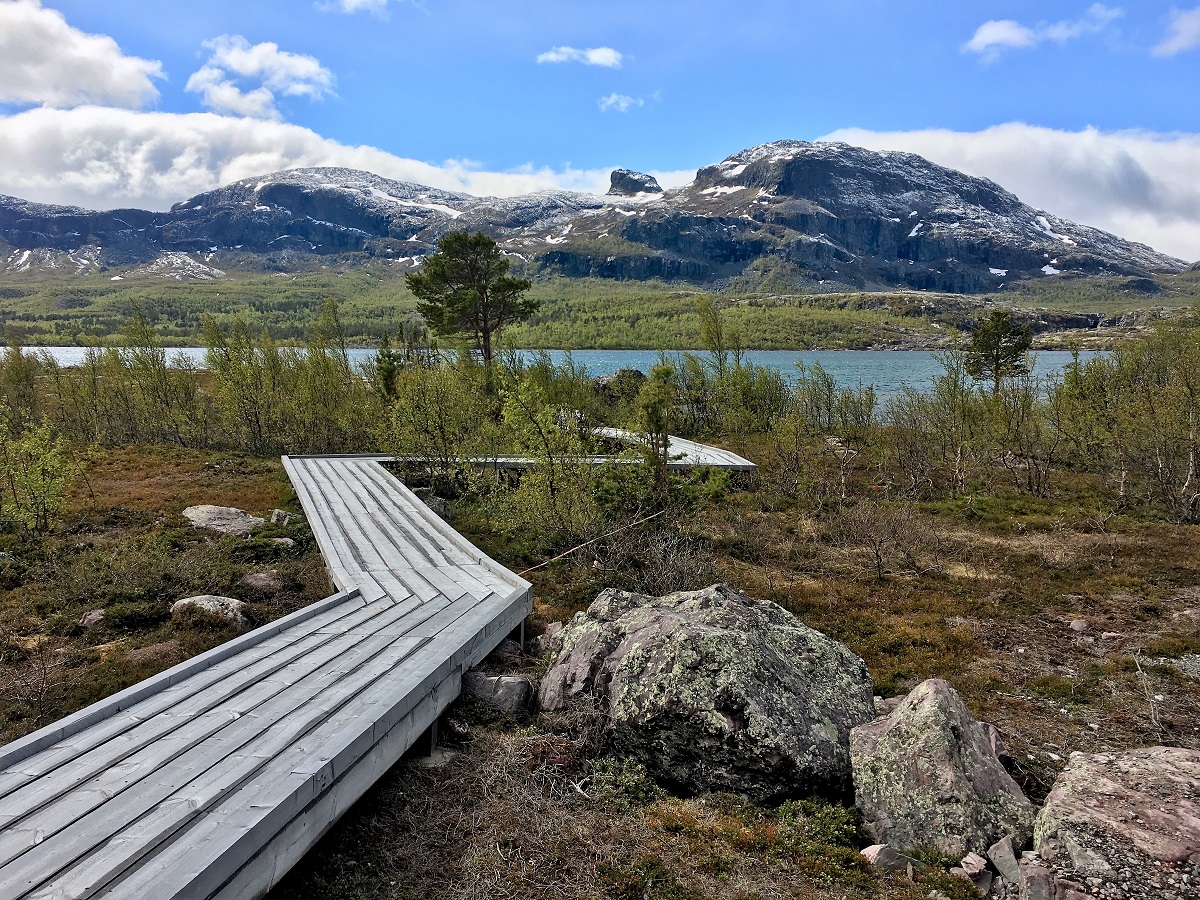
The Laponian Area of northern Sweden (or Lapland, as it’s sometimes known), is an enormous area of four national parks and two nature reserves across Sweden’s north. It has the rare distinction of being a “mixed” World Heritage Site, recognised for both the incredible nature, along with the fascinating history of the Saami people, a nomadic reindeer herding tribe indigenous to the area.
I’ve visited and filmed over 350 World Heritage sites, and Laponia is probably among the most epic I’ve ever seen. There’s a beautiful mix of landscapes here: soaring snow-capped mountains, glaciers, placid lakes and roaring streams, dense taiga forest, soggy marshlands and peat bogs, and windswept tundra too. The best area to visit is the Stora Sjofalett National Park as it contains the best landscapes, plus a cultural centre where you can learn about the Saami and their traditional way of life. Sadly, most of them have joined the modern world, but a few still stick to the traditional lifestyle.
The best time to visit Laponia is definitely in the summer, when the flowers are blooming, the trees are green, the animals laze around in the heat, and most importantly of all – the roads are passable! Laponia is largely above the Arctic Circle, so you can catch the Midnight Sun as well, which makes for a very surreal experience!
So how do you get there? Unfortunately it’s not super easy, but Laponia is best explored from a base in either Jokkmokk or Gallivare; the latter can be reached via train or plane from Stockholm. Or you can take a relaxing multi-day drive up European Highway E45, also from Stockholm. The Saami cultural centre in Stora Sjofalett is about 2.5 hours drive from Jokkmokk, slightly less from Gallivare. The distances are daunting but the scenery is so beautiful you won’t even notice! Before you set off into Laponia, make sure you have a full tank of fuel and that your car is in good condition – it is a very remote area and you might be a long way from help!
Venice, Italy
by David Angel from Delve into Europe, instagram

The entire city of Venice, and its lagoon, containing 118 islands, is a UNESCO World Heritage Site.
It’s one of very few cities in the world that needs little introduction – it’s built in a unique environment, and it grew from a few settlements on tiny muddy islands to becoming one of the great European powers of the Middle Ages.
Venice is a phenomenally beautiful city, with an incredibly rich artistic, architectural and cultural heritage. The city itself should be on every bucket list for Europe, but the rest of the lagoon is fascinating too, from the colourful fishing village of Burano to the isolated island of Torcello, the location of Venice’s original cathedral.
The city is full of amazing sights: the astonishing golden mosaics of St Mark’s Basilica, the grand St Mark’s Square and opulent Doge’s Palace are right next to each other, and it’s only a two-minute walk from these to the view of Palladio’s San Giorgio Maggiore and the lovely domed basilica of Santa Maria della Salute. Venice is a relatively small city, but it’s so tightly packed together that it takes a great deal of walking to explore the many alleyways and backstreets. It’s so easy to get lost there, and this is one of the highlights of any visit there!
All of this comes at something of premium: for much of the year, Venice is one of the most expensive cities in Europe to visit, with accommodation and eating out both proving highly costly. April, May and September are the best times to visit in terms of climate, but prices will tend to be high and the crowds will still be around.
We’ve made several trips to Venice during winter, when many hotels charge around 20% of their peak rates. It’s often quite cold during winter, but you sometimes get mists on the lagoon, which have a magical effect.
Venice’s famous high tides – acqua alta – are most common in the winter, mainly in November and December. We’ve managed to avoid them over four January visits. If you are going to get caught up in one, raised wooden walkways are put up around the affected areas – or you could pack a pair of wellington boots.
Gulf of Porto, Corsica, France
by Claire from ZigZag On Earth; Pinterest
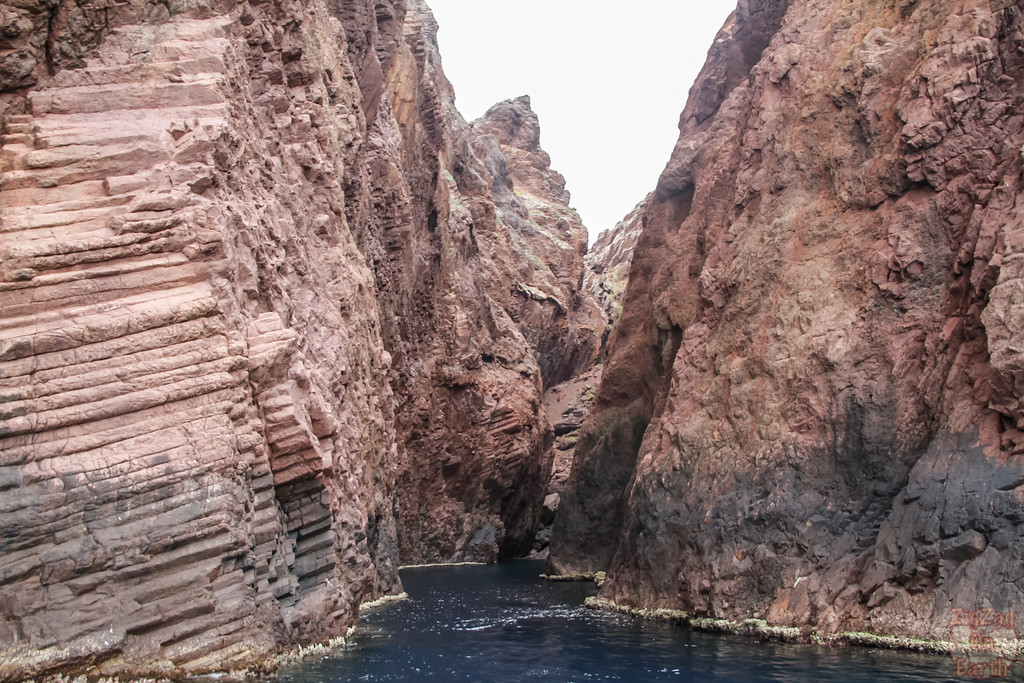
The Gulf of Porto is a must see on any road trip around the magnificent French island of Corsica (located in the Mediterranean Sea).
The small village of Porto Ota is nestled at the center of a Natural Reserve created around amazing geological formations. It is home to splendid colorful landscapes as well as abundant wildlife (birds and fish). And it was classified a Unesco Heritage site in 1983.
The 2 main points of interest of the area are:
- The Pink Calanches of Piana: 200 to 300m straight cliffs of hard rock that turn orange and red as the sun sets. You can explore them on foot to get up-close with the giant formations. But I think the best way to realize their scale and magnificence is to admire them from a boat.
- The Scandola peninsula, a volcanic rock mass with many fascinating and rare features as erosion has revealed its underlying structure (e.g. an horizontal basalt column organ). This area has no roads at all. The best way to visit is by boat from Porto Ota.
The area is magnificent at any time of the year but the colors are best in late afternoon. I just recommend avoiding the Summer months of July and August as it gets overcrowded.
And don’t forget your binoculars!
Chartres Cathedral, France
by Nicole from Travelgal Nicole; Facebook
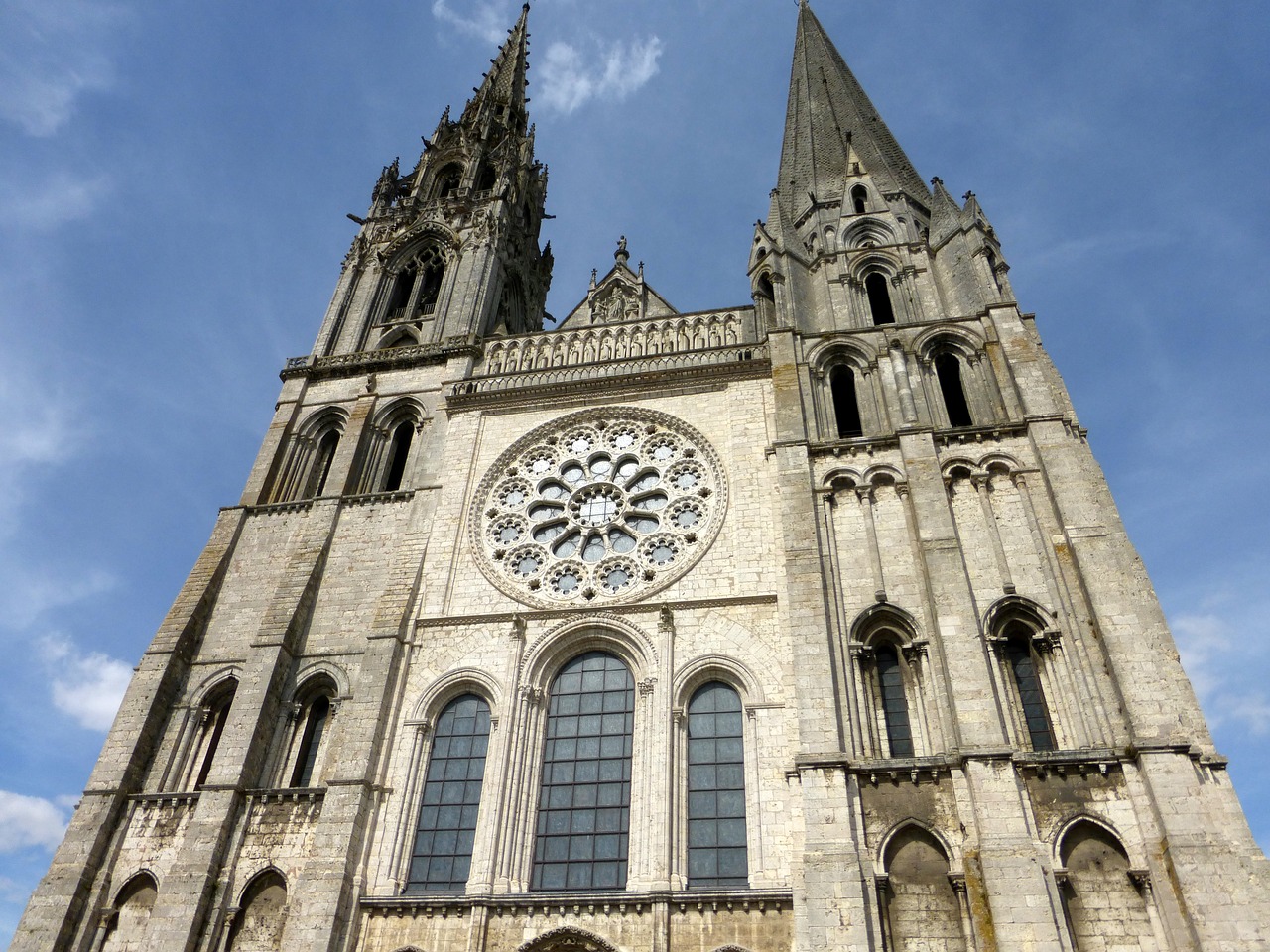
The town of Chartres is about 50 miles from Paris and home to the Chartres Cathedral. It’s a great day trip from Paris and a short one hour train ride away. You can visit the cathedral year round and it is better to go first thing in the morning to see the light coming through the stained glass.
The Chartres Cathedral is a 12th century gothic cathedral that is a UNESCO World Heritage Site. The Cathedral is considered to be one of the most beautiful gothic cathedrals with its mismatched spires (one dates back to the 12th century and the other to the 16th century) and stained glass windows and it demonstrates all of the gothic features such as pointed arches and flying buttresses.
The cathedral has been well preserved and is considered classic French Gothic Art which is why it is a UNESCO World Heritage site. Much of the stained glass was removed during the Second World War as a precaution against the destruction of war. The stained glass windows are the most distinctive feature of the cathedral. The windows are larger than normal in most cathedrals and all of the 176 windows are filled with equally dense stained glass which gives the inside a dark look which is still illuminated through the glass. The cathedral has three large rose windows which are circular in shape and look like a rose with all of the stained glass.
But don’t only come to Chartres for the Cathedral it is also worth a walk around the town and the preservation zone. It’s a really cute village and the buildings and streets date back to the 1800s. I loved walking along the pebbled pathways and crossing the quaint bridge there and stopping for coffee.
The Aeolian Islands, Italy
by Claudia Tavani from My Adventures Across The World; Facebook
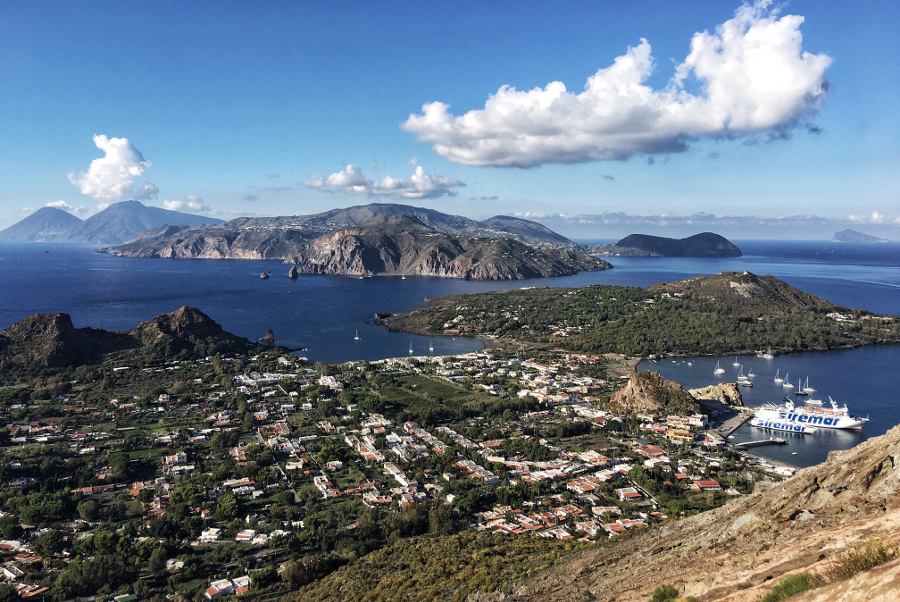
The Aeolian islands are one of the most unique places to visit in Italy and in the world, so much so that they are a recognized UNESCO World Heritage Site.
Located off the north eastern coast of Sicily, the archipelago is composed by 7 small islands that can be reached from the harbor of Milazzo, not far from Messina, in Sicily. All islands are of volcanic origin, though regular volcanic activity is only registered in two of the islands, Vulcano, which is famous for its natural mud baths and its “mare caldo” (warm sea, where the underground gas actually warms up the sea water) and Stromboli, which is famous for the volcano that gives it its name, and which is one of the most active in the world.
Other islands are Lipari, the largest and most populated one; Alicudi; Filicudi; Salina and Panarea. One of the best way to visit the islands is on a sailing trip that allows to move from place to place, enjoy the various beaches and get a flavor of the local traditions, including the food. Watching Stromboli erupt from the sea is a once in a lifetime show. Yet, one of the best things to do when visiting is joining a guided hiking expedition to the crater of Stromboli. This typically leaves in the afternoon, in time to reach the crater at sunset to admire a splendid view over the rest of the archipelago and to watch and listen to the eruption.
Palace of Westminster, London, UK
by Stefan and Sebastien from Nomadic Boys; instagram
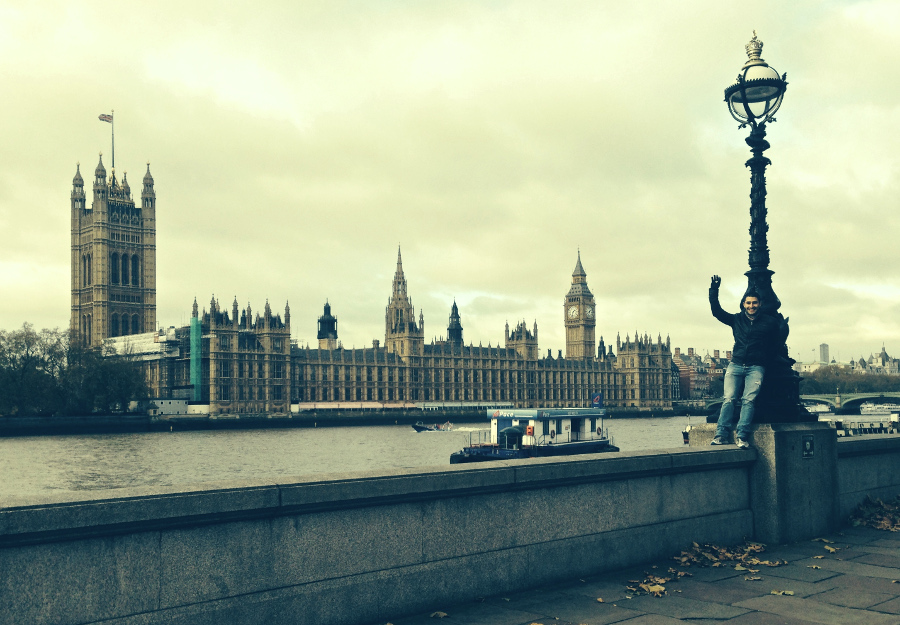
One of our favourite UNESCO listed buildings is the Gothic style Palace of Westminster in Central London – home to the famous Big Ben and the heart of the UK’s parliament. Not only is this building so beautiful to look at, it’s also an iconic, immediately recognisable landmark across London’s skyline.
Big Ben is the nickname of the Great Bell of the clock at the north end of Westminster Palace. It was renamed the “Elizabeth Tower” in honour of the Queen’s Silver Jubilee in 2012. Along with the rest of the Palace of Westminster, it has been featured in famous movies like James Bond, Mary Poppins, Thor, 28 Days Later and many more.
Across the road from the Palace is Westminster Abbey, which is dripping with history. This was where British monarchs have been traditionally crowned, married and buried over the past 1,000 years, as well as prominent figures like Isaac Newton and Charles Darwin. The most recent major event here was the wedding of Prince William and Kate Middleton in April 2011.
You can visit Westminster Palace at any time during the year, but the best time is during the summer months June/July/August when it’s more likely to be sunny for the best photography light.
Visiting “Westminster” (as it’s referred to locally) is open to the public, and admission is free. We recommend coming during the weekday as you may even be able to sit in during one of the sessions of Parliament and see Theresa May battling Jeremy Corbyn in the House of Commons.
One tip is to take one of the paid guided tours offered, as they explain the history behind every portrait, window, statue etc, and also give a full explanation of how the political institutions in the UK have evolved over time. They also offer an afternoon tea add on to the tour. Another tip is to have a drink/coffee at the bar inside Westminster, which is where the civil servants, political journalists and politicians also hang out to exchange gossip.
These are only a few of the amazing UNESCO World Heritage Sites in Europe recommended by travel bloggers. More to come in future articles 🙂
As you can easily see, these are some of the most popular world heritage sites, even though they are in Europe. And the list will keep going.
So, until the next article in this series, let me ask you this: What UNESCO World Heritage Sites did you visit? Which ones would you like to see?

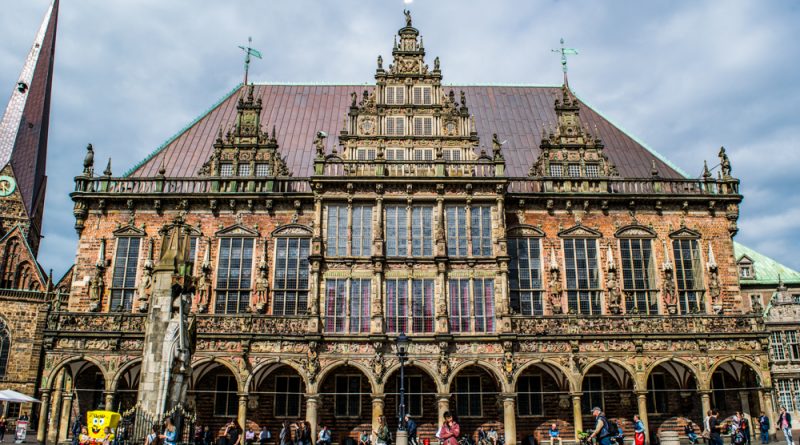

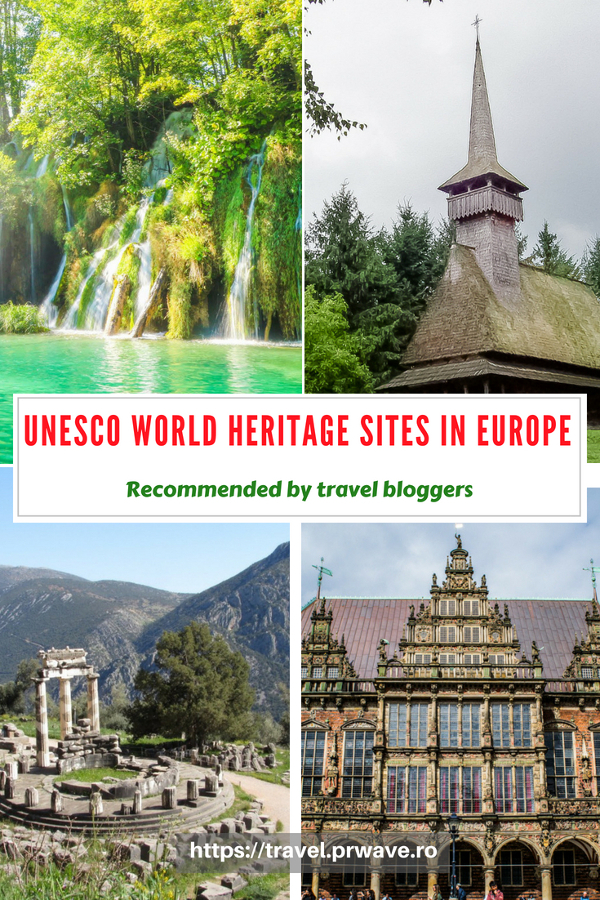
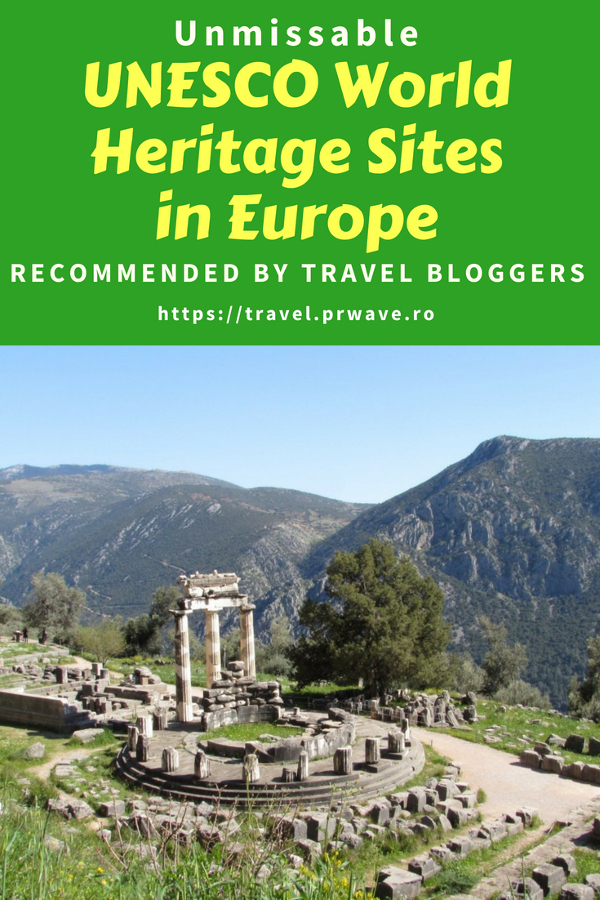
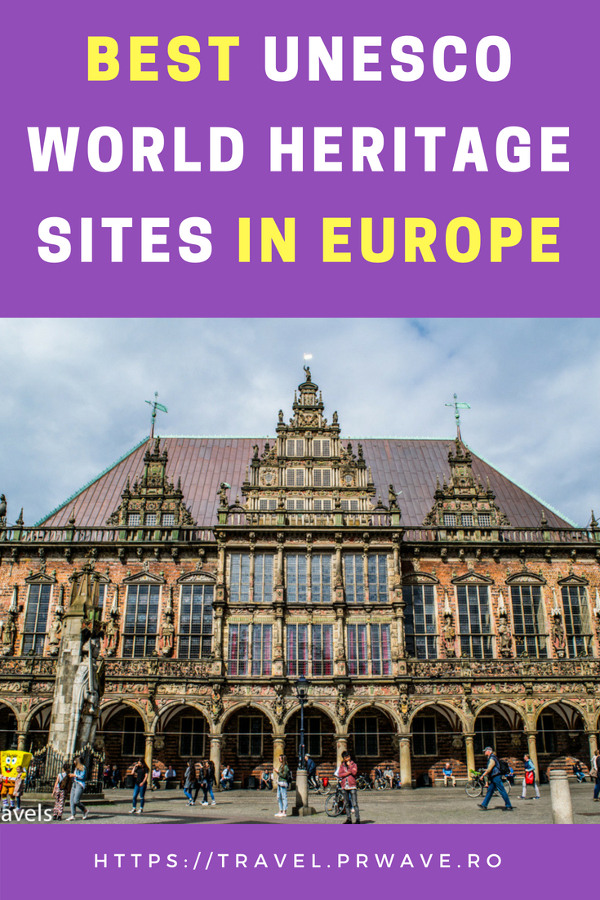
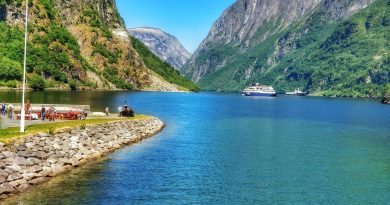
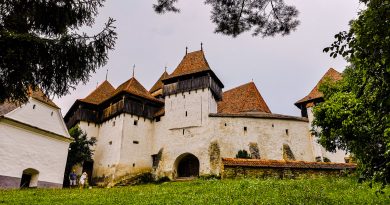
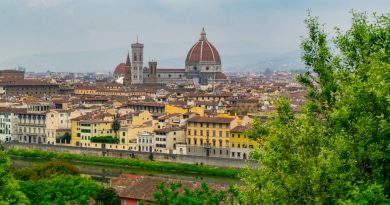
The lake in Croatia looks dazzling Lori! As does every item on this list. I have only visited Cyprus in Europe but did see The Tomb of the Kings. Pretty sure it is UNESCO going back like eons LOL. If not it is on par with most top sites for its ancient origins, and some ruins are well preserved too. Fab post buddy.
Ryan
Plitvice Lakes National Park in Croatia is so beautiful! I love hiking and I have had Croatia on my list for a little while to visit!